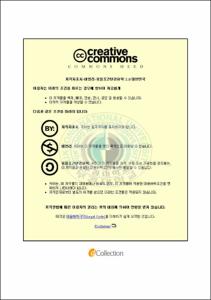Development of Small and Remote piloted aerial photographic system
- Alternative Title
- 소형항공자동촬영장비의 개발
- Abstract
- Images from Remote Sensing are satellite images or aerial photographs taken for the national use. However, satellite images with small spatial-resolution are not appropriate for mapping a large-scale map or research that needs high spatial-resolution. Meanwhile, because of its single band, aerial photographs with high spatial-resolution cannot be used for environmental remote sensing or research that needs multi-spectral resolution.
While PKNU 2 focused on high-resolution images, PKNU 3 was developed to fabricate a small aerial photograph system with focus on multi-spectral property; and PKNU 4 is intended to develop a new small aerial photograph system to reduce a time for photographic work by calculating exterior parameters and taking photography at once and by interlocking GPS/INS and digital camera of 8.2 million resolution. Therefore, PKNU 4 has developed to produce high-resolution multi-spectral image and to have minimum atmospheric effect when photographing at low altitude so as to have low-priced photos from a digital camera and effective analysis of parameters for rapidly changing environment such as South Korea.
Tests for Gyroscope calibration and lens calibration were carried out to understand geometric characters and to develop a small aerial photograph system for a small aeroplane. The completed aerial photograph system was operated four time for utility evaluation by using a helicopter, and once by using an aeroplane.
The results of images for utility evaluation obtained by using an aeroplane were compared with those of PKNU 2 images. In this study, RMSE number, which estimates accuracy of ortho-rectification images, was 5.52, which means its performance is not much different from the accuracy of otho-rectification images from PKNU 2.
With system calibration, capability of photograph system itself was shown to be excellent. PKNU 4 is smaller than PKNU 2 or PKNU 3, yet it seems to have similar capability of image accuracy. Therefore, while the time for ortho-rectification is reduced, it is suggested that capability has improved.
- Issued Date
- 2008
- Awarded Date
- 2008. 2
- Type
- Dissertation
- Keyword
- 소형항공자동촬영장비 Sensor Lens Control Computer
- Publisher
- 부경대학교 대학원
- Alternative Author(s)
- Park, Yong Bum
- Affiliation
- 부경대학교 대학원
- Department
- 대학원 위성정보과학과
- Advisor
- 최철웅
- Table Of Contents
- Ⅰ. INTRODUCTION = 1
1. Research Background and Necessity of Small Aerial = 1
2. Domestic and International Research Trends = 4
Ⅱ. SMALL REMOTELY-PILOTED AERIAL PHOTOGRAPHY SYSTEM = 8
1. Research Chronology = 8
2. Small Automatic Remotely-Piloted Aerial Photographic Device = 9
A. Sensor Head = 10
(1) Sensor Body = 10
(2) Sensor Lens = 10
B. INS Head = 12
C. Control Computer = 14
Ⅲ. CALIBRATION OF LENS AND GYROSCOPE = 16
1. Camera Lens Calibration for Accurate Aerial Photography = 16
A. Calibration to Improve Accuracy of Small Automatic Aerial = 16
B. Theory for the Calculation of Les Distortion = 18
C. Calibration of Camera Lens = 20
2. Calibration of Gyroscope = 32
A. Types of Gyroscope = 32
(1) Mechanical Gyroscope = 32
a. Moment of Inertia = 32
b. Precession = 32
(2) Optical Gyroscope = 33
B. TCM3 Gyroscope = 33
Ⅳ. A Utility Evaluation of the Small Automatic Aerial Photography System = 35
1. Utility Evaluation Method = 35
A. Research Region = 35
2. Test Results and Discussion = 37
A. Field Test with helicopter = 37
(1) The 1st Research Photography = 37
(2) The 2nd Research Photography = 40
(3) The 3rd Research Photography = 44
(4) The 4th Research Photography = 48
B. Comparison and Analysis of Field Tests Using helicopter = 51
C. Field Tests Using Aeroplane = 54
(1) Tests of Automatic Aerial Photographic Equipment Using = 54
D. Times for Research Photography and GPS Reception State = 58
Ⅴ. ORTHOIMAGE MAPPING AND RESULTS = 60
1. Orthoimage Mapping = 60
A. Research Objective = 60
B. Research Target Region = 60
C. Research Method = 60
D. Aerial Photo Data = 61
E. Image Processing by Using Digital Map = 62
(1) Interior Orientation = 62
(2) External Orientation = 62
(3) Making Orthoimage Map by Using Digital Map = 63
F. Results of Making Orthoimage Map = 66
Ⅵ. CONCLUSION = 67
REFERENCE = 69
- Degree
- Master
- Files in This Item:
-
-
Download
 Development of Small and Remote piloted aerial photographic system.pdf
기타 데이터 / 15.95 MB / Adobe PDF
Development of Small and Remote piloted aerial photographic system.pdf
기타 데이터 / 15.95 MB / Adobe PDF
-
Items in Repository are protected by copyright, with all rights reserved, unless otherwise indicated.